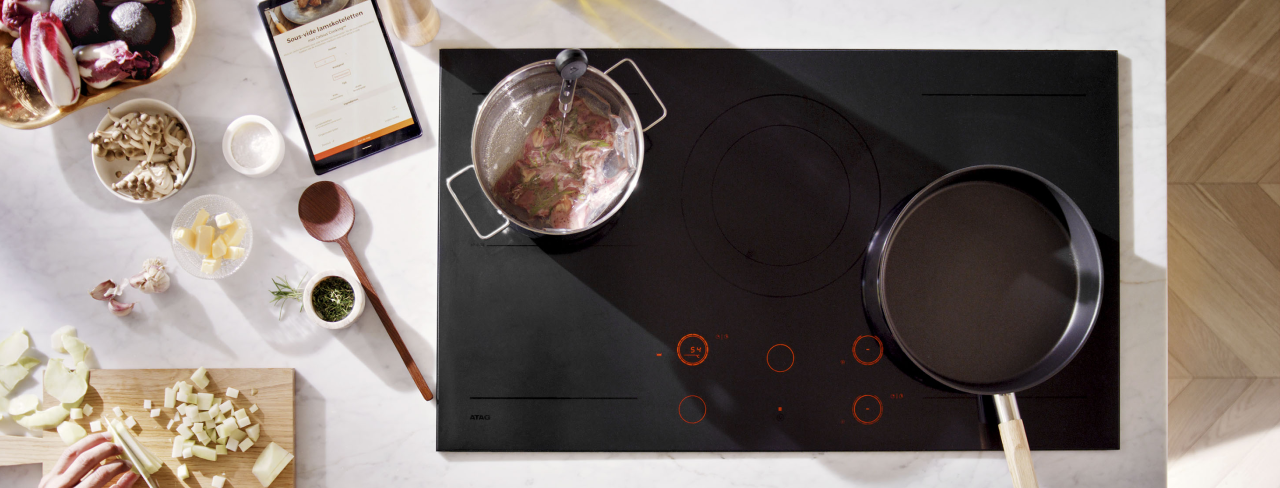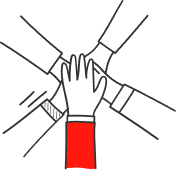Firmware for smart kitchen appliances

Customer
Gorenje, a leading European home appliance manufacturer

Project type
Firmware development for kitchen appliances (Induction Cooktops)

Technology
Bare metal, Cypress PSoC4, Cypress PSoC4100S Plus, Cloud integration, WiFi, Bluetooth Low Energy (BLE), LIN bus, Cypress Capacitive Sensing (CapSense), FOTA (Firmware Over-The-Air), LED indication, Software Safety Class B (IEC 60730-1) compliance.

Project tools
Atlassian products (Jira), Slack for communication and discussions, and meeting tools.

Project method
Kanban

Project duration
2 years +
About
Induction HOB with Celsius° Cooking
The project was about implementing a Bare-metal firmware compliant with Safety Class B, both secure core and application parts, for kitchen appliances – Induction Cooktops. The Developex team worked on firmware for various configurations of hardware and further firmware adaptation for a new subset of products.
Developex role:
- Firmware implementation from scratch, Safety Class B compliant architecture, and code development.
- Software Architecture and LIN protocol design.
- TouchUI and Touch tuning.
- Integration with 3rd party Hardware and Firmware/Software (e.g. Smart pots, which featured their own communication module and mobile app, Firmware update).
- Integration with the Client Cloud Service, thus supporting network features and remote control.
- Stabilization and bug-fixing activities, code optimization.
- Automated testing.
- Safety Class B compliance, preparing the necessary documentation for Safety certification, developing Safety Class B compliant codebase, and designing architecture.
The Client was responsible for Hardware, Bootloader software, Cloud services backend, manual QA, and 3rd party Firmware and Hardware, which we integrate.
Project challenges we successfully overcome
Deadlines. One of the biggest challenges was meeting the very strict and demanding deadlines.
Fixed price. Our contracts had upper-bound fixed costs, which we are not allowed to exceed. We had to ensure budget predictability.
Dealing with specification updates at the project’s final stages. Specification revisions introduced far more work than initially anticipated. However, we were able to successfully change the Firmware logic and do new integrations while still meeting our deadlines.
Work with and support the 3rd party teams throughout the project.
Project transparency. We closely monitored every change or request made. This allowed our Client to have control over the situation.
In response to spec updates and even later requests from the QA team, we reoptimized the Firmware to let all the changes “fit into” the existing Hardware, which was not changing during later project stages.
Developex introduced the QA bug tracking process to the Client QA teams to help their work and impact happen more efficiently and save time for the project.
Effective communication was key throughout the project. We communicated frequently with everyone on different levels, and the team showed a lot of teamwork and leadership skills in many areas. This supported our main counterparty Managers and Tech Lead by giving them not only visibility but also choices and options, predictability, and forecasting, which was greatly appreciated by the Client team.

Main features that Developex was responsible for
- Induction touch interface.
- Whole firmware architecture (including safety core, application level, communication level, integrations including cloud).
- All smart and induction features like automatic bridge recognition, chef function, boost function, smart pot detection, preset cooking programs, timers and stopwatch, error handling, power management, child lock, automatic shut off when overheated, and a lot more.
- Temperature-controlled precision cooking to the degree and ability to use it on 2 zones at the same time on every induction hob.
- Slider per zone with timer.
- Menu with a number of automatic programs with reference to temperature.
- Communication with other kitchen appliances, such as the extractor hoods.
- WiFi connection to the app for inspiration, insight, and control.
- Accurate cooking with various cooking technics and accessories.
Project after-release support
The Developex team offers constant project after-release support to address any requirements or requests for possible improvements or fixes. Typical tasks include investigating and proposing workarounds, debugging (including Hardware), tracing back complex errors and artifacts, making improvements, and addressing specification updates.

Developex team
1 Project Manager, 2 Firmware developers, 1 QA Automation
- Project Manager’s primary role – risk management, communication, conflict management, communication strategy, expectations management, and team support.
- Firmware developer’s role – both development and communication, research, leadership and ownership, documentation, risk solving, mentorship of the Client, and 3rd party development and management teams.
- QA was responsible for test automation of the Firmware.

During the project, our team created such project documentation as Software Architecture documentation, a Phase roadmap, a Safety Certification Submission document, and a QA bug tracking spreadsheet with a pipeline.
Time reports, release notes, and roadmap plans were prepared and provided regularly, which, together with close communication on the project status, detailed planning of project phases, and scope estimations, allowed us to get the project intro deadlines.
FW adaptation for a new subset of kitchen appliances
(Induction Cooktops)
About
The project is based on previous firmware development work done by the Developex team, which allowed scaling the project for a new subset of kitchen appliances and reusing of the project architecture. The new subset included a new Hood with integrated extraction.
As part of this project, Developex was responsible for adapting the Firmware to meet slightly different requirements while also preserving the main parts of the previously developed project.
In addition, we were tasked with adding new features available only for the new Hardware:
- Built-in hood control (fans speed, extraction tower position, etc.).
- Evaluation of the hood filters saturation.
- Window switch tracking.
Despite having to deal with new Hardware limitations, we successfully delivered on the project.

